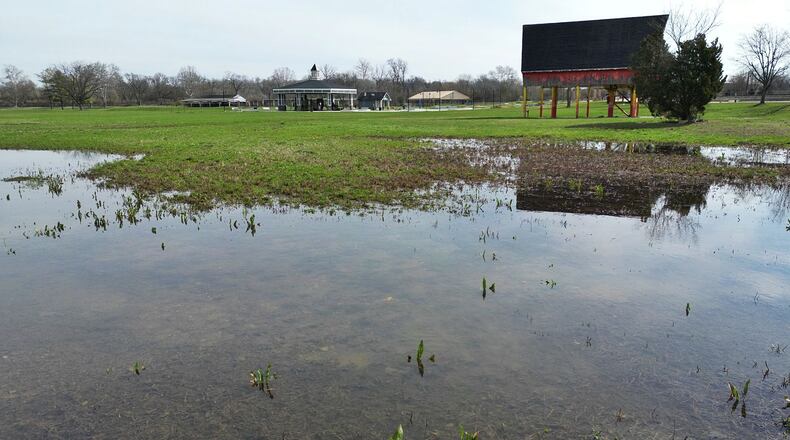City Council unanimously approved a resolution Tuesday night to pay Fishbeck $14,900 for the study at Community Park after the Monroe Sports Association (MSA) made a request to the Park Board that drainage improvements be made to the park.
MSA officials said they lose many games per year due to the wet fields.
The resolution to pay Fishbeck $192,000 for a more comprehensive storm water study at Bicentennial Park passed 6-1 with council member Marc Bellapianta casting the “no” vote.
In June 2022, council tabled a similar water storm study at Bicentennial Commons. Then earlier this month, the Park Board made another recommendation to take this study back to council.
Bellapianta said he was “very concerned” about the amount of debris buried at the park, formerly Americana, and prior to that LeSourdsville Lake.
Allen Aspacher, vice president/senior project manager for Fishbeck, said the study hopefully will show where the concrete structures are located and their size.
“We need to understand what’s underground” and what’s keeping the water from seeping into the ground, Aspacher said.
“So many unanswered questions,” Bellapianta said. “Are we going to create a nightmare for you and us?”
Aspacher said the study will determine the best way to move the water, either by creating a collection area or diverting it into the Great Miami River.
“We need to do the investigation first,” he said.
After the study is complete, Aspacher said he will meet with Monroe officials and city council to determine the next steps.
Public Works Director Gary Morton said the study will allow the city to possibly “move and manipulate” the parks master plan to see “how all the pieces fit together” at Bicentennial Park.
So far, the city has spent $2.4 million for Phase I construction at Bicentennial Park, officials said. The project is estimated to cost $15 million and may take 10 to 15 years to complete.
The storm water plan was divided into four sections. Those tasks include: field study, soil borings and subsurface geophysical investigation, hydrology analysis and storm water plan and storm water system conceptual design.
Aspacher said the first two tasks will take about six months to complete.
In the past at Community Park, Public Works has completed tasks such as installing the concrete curb and catch-basins along the parking lot and cleaning out the drainage ditches, according to city documents. But these improvements have not been enough to alleviate all of the issues with the overall drainage, the city said.
Fishbeck will look at the topography of the park land and necessary items that it would take to drain the park land more effectively, the city said.
Once the water leaves the park and enters Coldwater Creek, it flows west through the city and exits the city limits just west of Sands Avenue between Ethel and Lena drives, according to city documents. The city has received many complaints from the homeowners on Ethel and Lena drives about flooding of Coldwater Creek during moderate to heavy rain events.
About the Author


